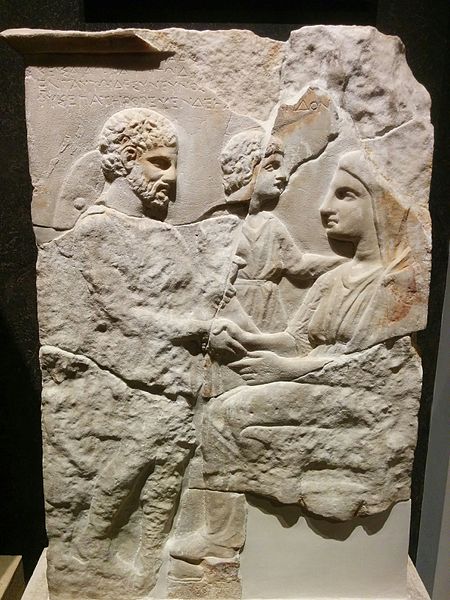Ancient Macedonian language
Ancient Macedonian was the language of the ancient Macedonians which was either a dialect of Ancient Greek or a separate Hellenic language. It was spoken in the kingdom of Macedonia during the 1st millennium BC and belonged to the Indo-European language family. It gradually fell out of use during the 4th century BC, marginalized by the use of Attic Greek by the Macedonian aristocracy, the Ancient Greek dialect that became the basis of Koine Greek, the lingua franca of the Hellenistic period. It became extinct during either the Hellenistic or Roman imperial period, and was entirely replaced by Koine Greek.
Binding spell, 4th century B.C., Oraiokastro
Funerary stele, with an epigram on the top, mid 4th century B.C., Vergina
The Macedonians were an ancient tribe that lived on the alluvial plain around the rivers Haliacmon and lower Axios in the northeastern part of mainland Greece. Essentially an ancient Greek people, they gradually expanded from their homeland along the Haliacmon valley on the northern edge of the Greek world, absorbing or driving out neighbouring non-Greek tribes, primarily Thracian and Illyrian. They spoke Ancient Macedonian, which is usually classified by scholars as a dialect of Northwest Doric Greek, and occasionally as a distinct sister language of Greek or an Aeolic Greek dialect. However, the prestige language of the region during the Classical era was Attic Greek, replaced by Koine Greek during the Hellenistic era. Their religious beliefs mirrored those of other Greeks, following the main deities of the Greek pantheon, although the Macedonians continued Archaic burial practices that had ceased in other parts of Greece after the 6th century BC. Aside from the monarchy, the core of Macedonian society was its nobility. Similar to the aristocracy of neighboring Thessaly, their wealth was largely built on herding horses and cattle.

Stag Hunt Mosaic, 4th century BC
The expansion of ancient Macedon up to the death of Philip II of Macedon (r. 359 – 336 BC)
Regions of Mygdonia, Edonia, Bisaltia, Crestonia and Bottiaea
The entrance to the "Great Tumulus" Museum at Vergina






